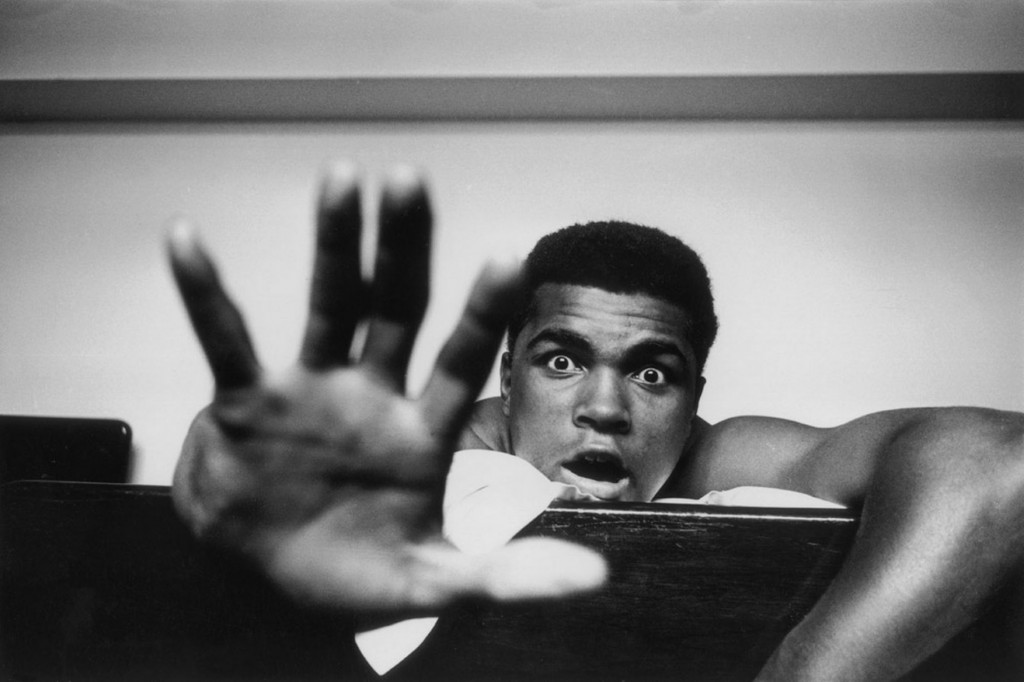What a loss to suffer, even if for years you knew it was coming. Muhammad Ali, who died Friday, in Phoenix, at the age of seventy-four, was the most fantastical American figure of his era, a self-invented character of such physical wit, political defiance, global fame, and sheer originality that no novelist you might name would dare conceive him. Born Cassius Clay in Jim Crow-era Louisville, Kentucky, he was a skinny, quick-witted kid, the son of a sign painter and a house cleaner, who learned to box at the age of twelve to avenge the indignity of a stolen bicycle, a sixty-dollar red Schwinn that he could not bear to lose. Eventually, Ali became arguably the most famous person on the planet, known as a supreme athlete, an uncanny blend of power, improvisation, and velocity; a master of rhyming prediction and derision; an exemplar and symbol of racial pride; a fighter, a draft resister, an acolyte, a preacher, a separatist, an integrationist, a comedian, an actor, a dancer, a butterfly, a bee, a figure of immense courage.
In his early career, when he declared his allegiance to Elijah Muhammad’s Nation of Islam, rid himself of his “slave name,” and lost his heavyweight title rather than fight in Vietnam, Ali was vilified as much as he was admired. Millions hated Ali; he threatened a sense of the racial order; he was, in his refusal to conform to any type, as destabilizing to many Americans as he was to the many heavyweights who could not understand why he would just not come to the center of the ring and fight like a real man. He was, for many years, a radical figure for many Americans. For years, many refused to call him by his new name. “I pity Clay and abhor what he represents,” the columnist Jimmy Cannon wrote. Even Red Smith, the most respected of all sports columnists, compared Ali to the “unwashed punks” who dared to march against the war. But in recent decades, as Parkinson’s disease began to overwhelm his gifts for movement and speech, and as the country’s attitudes changed, Ali became a focus of almost universal affection. The people who encountered him at charity dinners, in airports, at sporting events approached him as they would a serene Pope Francis or the Dalai Lama, and, if he could summon a whispered joke or flirt for a moment or just widen his eyes in that old vaudeville way of his, people left with a sense of having met a source of wonder.
Cassius Clay lived in a modest house on Grand Avenue, a relatively pleasant street with other black families, not in “Smoketown,” the poorer black neighborhood in southwest Louisville. It was middle class, “but black middle class, black Southern middle class, which is not white middle class at all,” Toni Morrison told me when I was working on a book about Ali. (As an editor at Random House, Morrison had worked on Ali’s autobiography, “The Greatest.”) Cassius was named for a nineteenth-century Kentucky abolitionist and military commander who inherited forty slaves and then freed them when he came home from the war in Mexico. He was, for a while, Abraham Lincoln’s emissary to Russia, but he soon returned to Kentucky to work again for the abolitionist cause. Cassius—the boy, the fighter—was told stories about his great-grandfather who was raised on the abolitionist’s farm, “but not in a slave capacity. No, sir!,” as Clay, Sr., Ali’s father, once said.
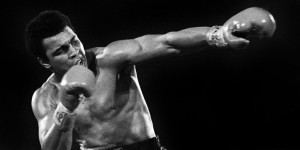
Louisville, when Cassius was growing up in the nineteen-forties and fifties, was a Jim Crow city. American apartheid. Not quite as virulent as in Jackson or Mobile, but plenty bad. At movie theatres like the Savoy, whites sat in the orchestra, blacks in the balcony; most other theatres were for whites only, and so were the stores downtown. There were white schools, white country clubs, white businesses. Blyden Jackson, a black writer from Louisville, who was in his forties when Clay was growing up, wrote, “On my side of the veil everything was black: the homes, the people, the churches, the schools, the Negro park with Negro park police. . . . There were two Louisvilles and, in America, two Americas.” It was a childhood in which Cassius saw his mother turned away for a drink of water at a luncheonette after a hard day of cleaning the floors and toilets of white families. These were daily scenes, the racial arrangements of Louisville.
Cassius’s father was a man of thwarted dreams. He distrusted whites, and felt he was prevented from becoming a painter of canvasses rather than of signs and billboards. He drank too much, and his bitterness sometimes tipped into chaos. He was, one of Ali’s friends said, the source of a great deal of pain in the family. His mother, Odessa, was usually the object of Cassius, Sr.,’s fury and fists, and she was the boy’s comfort. Odessa was the first to know that her son was hyperverbal and quick with a left hand. As she once recalled, “He was always a talker. He tried to talk so hard when he was a baby. He used to jabber so, you know? And people’d laugh and he’d shake his face and jabber so fast. I don’t see how anybody could talk so fast, just like lightning. And he never sat still. He was in the bed with me at six months old, and you know how babies stretch? He had little muscle arms and he hit me in the mouth when he stretched and it loosened my front tooth and it affected my other front tooth and I had to have both of them pulled out. So I always say his first knockout punch was in my mouth.”
As an athlete and as a performer, Clay learned from, and copied, a multitude of sources: the braggadocio of the professional wrestler “Gorgeous” George Wagner, the footwork and boxing style of Sugar Ray Robinson. But no public figure affected him more deeply than Emmett Till, a boy from Chicago, who, on a visit to family in Money, Mississippi, was murdered for the alleged sin of “reckless eyeballing.” The story was that Till, who was fourteen, dared to call a white cashier “baby.” A few days later, white men turned up at the house where he was staying, dragged him out of his bed, shot him in the head, tied barbed wire attached to a bulky cotton-gin fan around his neck, and threw his corpse in the Tallahatchie River. The horror that Cassius experienced looking at the pictures of Till’s brutalized face in the pages of the black press helped convince him of the limits of his possibilities as a black kid in the South.
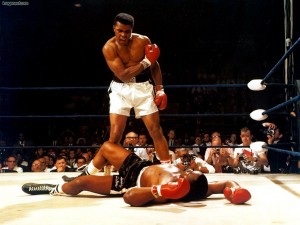
“There wasn’t nothing to do in the streets,” he told one writer, recalling his own stunted growing up. “The kids would throw rocks and stand under the streetlights all night, running in and out of the juke joints and smoking and slipping off drinking, nothing to do.”
At Central High, Cassius’s marks were so bad in the tenth grade that he had to withdraw and then come back and repeat the year. A career in professional football or basketball seemed to require college, and that, he felt, wasn’t going to happen. Boxing was the path. He daydreamed in class, shadowboxed in the hallways. He trained at first in the gym of a local police officer named Joe Martin and, even as a teen-ager, he showed uncommon skill. He was incredibly disciplined even then, waking at dawn and running through Chickasaw Park. And the preternatural confidence was there from the start. He was The Greatest practically before he entered the ring. Even in those days, Clay was using doggerel verse, like a pugilistic Ogden Nash, to predict an opponent’s demise: “This guy must be done / I’ll stop him in one.” At school assemblies, he got up in front of the student body while the friendly principal, Atwood Wilson, introduced him as the “next heavyweight champion of the world! This guy is going to make a million dollars!” He struggled in class, finding it hard to read a book, but he was intelligent, absorbing things through other means. As an aspiring fighter, he tore through Golden Gloves competitions, leading his mentor, Wilson, to say, “The truth is, the only thing Cassius is going to have to read is his I.R.S. form, and I’m willing to help him do it.”
But, while he eventually became an Olympic champion, he did not so much impress boxing writers as bewilder them. Even A. J. Liebling, the finest of all boxing writers, and no one’s idea of a reactionary or a hack, was confounded by the young man’s loose-limbed style. Clay’s refusal to exchange punches with his opponent in the traditional manly fashion, his way of dancing, of circling an opponent, flashing lacerating jabs that came lashing up from the hip . . . this was not proper, somehow.
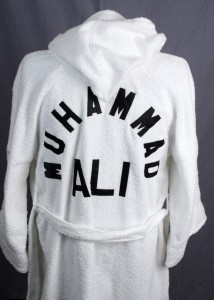
At the 1960 Rome Olympics, Clay won the gold medal with a victory over a lumbering opponent from Poland. Liebling offered only qualified praise. “Clay had a skittering style, like a pebble scaled over water,” he wrote. “He was good to watch, but seemed to make only glancing contact. It is true that the Pole finished the three-round bout helpless and out on his feet, but I thought he had just run out of puff chasing Clay, who had then cut him to pieces.”
History will record that the athletic career and the American life that unfolded in the coming years were the very opposite of a bore. Muhammad Ali was a central excitement and provocation in the midst of civil rights, Vietnam, and Black Power. Between 1964 and 1980 came a story, Ali’s story, that no one book could quite take in. Too many triumphs, too many crises, endings, false endings, comebacks, comic outrages, trials, tragic scenes.
The only thing ordinary about the boxing career of Muhammad Ali was that he stayed too long and ended up damaged. Everything else was outsized: the upset victory in 1964, to win the title from Sonny Liston (“I’m King of the World!” he shouted to the reporters at ringside), the friendship (and falling out) with Malcolm X, the embrace of the Nation of Islam, the blaze of brilliant fights in the mid-sixties, then the draft, the acceptance of a potential jail term, the stripping of his title, the years in exile. Ali was not to be mistaken for a political leader or a thinker, but he had political importance as a symbol of refusal, of black pride. And, along with his importance as a symbol, particularly to young people facing the draft or marching in the streets, there was a level of glamour without parallel even among the rock gods of the time. When Ali fought Joe Frazier for the first time, at Madison Square Garden, in March, 1971, the ringside photographer for Life was Frank Sinatra. When Ali went to Zaire to fight, and defeat, George Foreman, half of PEN seemed to follow, and Norman Mailer’s account, “The Fight,” is the writer at his comic-epic best, describing the final knockout with precision:
Foreman’s arms flew out to the side like a man with a parachute jumping out of a plane, and in this doubled-over position he tried to wander out to the center of the ring. All the while his eyes were on Ali and he looked up with no anger as if Ali, indeed, was the man he knew best in the world and would see him on his dying day. Vertigo took George Foreman and revolved him. Still bowing from the waist in this uncomprehending position, eyes on Muhammad Ali all the way, he started to tumble and topple and fall even as he did not wish to go down. . . . He went over like a six-foot sixty-year-old butler who has just heard tragic news.
Ali’s athletic feats were outsized, not least because they were performed at the risk of terrible physical harm. Watch the third fight with Joe Frazier, in Manila. The two men nearly destroy each other. Ali admitted afterward that it was the “closest I’ve come to death.” And Frazier, who despised Ali for mocking him, for calling him a gorilla and an Uncle Tom, said, “I hit him with punches that would have knocked a building down.” Ali, who had won after Frazier’s cornermen determined that he was too swollen, too blinded to go on, admitted that both he and Frazier were never the same after that third fight. “We went to Manila as champions, Joe and me, and we came back as old men,” he said.
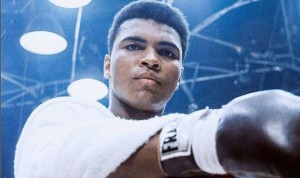
Ali was not blind to the hypocrisies and brutality of the “game” that had been his professional life. The source of his fame was a sport in which race was often an ugly element of its history, a contest in which one man tries to beat another senseless, tries to inflict temporary brain injury (a knockout) on another. Ali reaped millions of dollars from the fight game, and yet he was, at times, ambivalent about that history and the lurid spectacle of one man fighting another, particularly one black man fighting another. Ali had the capacity to enjoy the fruits of the game and the riches it brought, but he also knew the history of the sport—John L. Sullivan refusing to fight black challengers and Jim Jeffries telling the world he would retire “when there are no white men left to fight.” Ali was schooled in the history of Jack Johnson’s pride and persecution—the band at ringside struck up “All Coons Look Alike to Me” when Jeffries finally dared to face Johnson. He knew well how Jack Dempsey avoided black fighters after taking the title. Ali had seen how fighters before him had been sponsored, managed, and exploited by Mafia thugs. He remembered from childhood how Joe Louis’s handlers gave him a set of rules to avoid alienating white America.
What modern athlete, much less one at Ali’s level, has ever talked with such political complexity, ambiguity, or engagement?
When I was doing the research for my book on Ali, I interviewed one of his main early antagonists in the ring, Floyd Patterson, who was clearly suffering from trauma-induced dementia. Patterson could barely string a few sentences together. Sonny Liston, his other early rival, had died years earlier with heroin on him. Ali, for his part, was living with his wife, Lonnie, at their farm, in Berrien Springs, Michigan. He was suffering from Parkinson’s, and it was hard to believe that the accumulation of punishment (from Frazier, from Earnie Shavers, Ken Norton, Larry Holmes, from a lifetime of beatings) had not been at least partially responsible for his condition. But he refused any note of regret. We watched films of his fights with Liston and couldn’t help admiring his younger self: “Sooo pretty!” More than a generation after his retirement, and now, after his passing, Ali and his story remain known everywhere in the world. How many today know the name of his current inheritor, the heavyweight champion of the world? The story of Muhammad Ali will long outlast the sport he took up, sixty-two years ago in Louisville, to avenge the theft of his beloved red bicycle.
One last thing: at the Greek Theatre in Berkeley tonight, Paul Simon was singing “The Boxer.” Pausing before the final verse, he told the audience, “I’m sorry to tell you this, but Muhammad Ali just passed away.”
Source: The New Yorker

